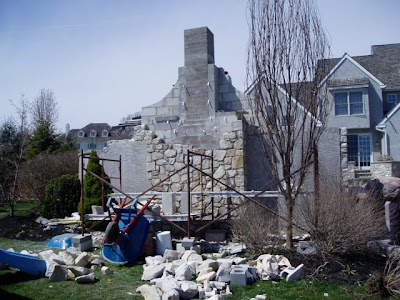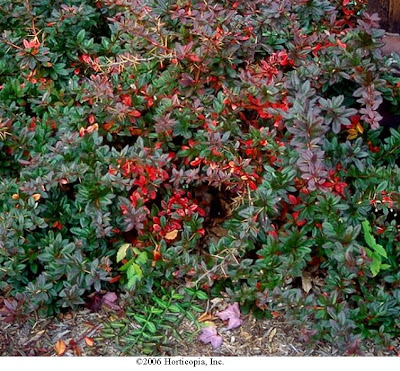 Acer tataricum ssp. ginnala 'Durand Dwarf'
Acer tataricum ssp. ginnala 'Durand Dwarf' syn.
Acer ginnalaAmur Maple
Type Tree, woody plant
Hardy range 3A to 8A
Height 12' to 15' / 3.60m to 4.60m
Spread 15' to 18' / 4.60m to 5.40m
Growth rate Average
Form Rounded and vase shapes
Exposure Full shade to full sun
Persistence Deciduous
Bloom Color White
Bloom Time Spring
The flowers are fragrant.
Environment
This plant tolerates some drought and some salt.
This plant will grow in dry soil.
Suitable soil is well-drained/loamy, sandy or clay.
The pH preference is an acidic to alkaline (less than 6.8 to more than 7.7) soil.
Leaf Color Green
Fall Color Red
This plant has attractive fall colors.
Culture Notes
Amur Maple has brilliant red fall foliage color and persistent showy fruit which makes a great choice for almost any landscape. Fruit turns brown in winter and persists until spring. The tree tolerates poor, clay soil well by developing a shallow root system. Leaves dry up in summer drought if the plant is in full sun, but some irrigation will help prevent this in a dry year. It is most drought-tolerant in partial shade. It has been used along streets beneath power lines and can make a nice specimen or patio tree for summer shade. Dwarf cultivars include 'Compactum', 'Durand Dwarf' and Emerald Elf'. 'Flame' (red fruit) and 'Embers' (fabulous fall color) are also available.
This multi-stemmed tree can be trained into a single trunk in the nursery and can make a great street tree.Use as a street tree
This plant can be grown as a multi-trunk tree for use in highway median strips and in landscapes, or can be used as a street tree where there is not a need for tall-vehicle clearance beneath the crown. The small stature and low, spreading, branching habit makes pruning for vehicular clearance difficult unless it is properly trained from an early age to develop one main trunk. The effort required initially to train this tree for street tree use, however, may be offset by its advantages.
Maintain adequate mulch area
Clear all turf away from beneath the branches and mulch to the drip line, especially on young trees, to reduce competition with turf and weeds. This will allow roots to become well established and keep plants healthier. Prune the tree so trunks and branches will not rub each other. Remove some secondary branches on main branches with included bark. This reduces the likelihood of the main branch splitting from the tree later when it has grown to become an important part of the landscape. Locate the tree properly, taking into account the ultimate size, since the tree looks best if it is not pruned to control size. The tree can enhance any landscape with its delightful spring flush of foliage. It can be the centerpiece of your landscape if properly located.
Tree establishment specifications
Choose good quality trees for planting. The most common cause of young tree failure is planting too deep. In most instances, the point where the top-most root in the root ball originates from the trunk (referred to as the root flare zone or root collar) should be located just above the soil surface. You may have to dig into the root ball to find the root flare. If there is nursery soil over this area, scrape it off. Never place ANY soil over the root ball. The planting hole should be at least twice the width of the root ball, preferably wider because roots grow best in loose soil. In all but exceptional circumstances where the soil is very poor, extensive research clearly shows that there is no need to incorporate any amendments into the backfill soil. Simply use the loosened soil that came out of the planting hole. Simply planting with the topmost portion of the root ball slightly higher than the surrounding soil might still install the tree too deep - be sure to locate the root flare.
Weed suppression during establishment is essential. Apply a 3-inch thick layer of mulch to at least a six-foot diameter circle around the tree. This area should be at least two feet in diameter for each inch of tree trunk diameter and maintained during the establishment period. Apply a thinner layer of mulch directly over the root ball but keep it at least 10 inches from the trunk. This allows rainwater, irrigation and air to easily enter the root ball and keeps the trunk dry. Placing mulch against the trunk and applying too thick a layer above the root ball can kill the plant by oxygen starvation, death of bark, stem and root diseases, prevention of hardening off for winter, vole and other rodent damage to the trunk, keeping soil too wet, or repelling water.
Regular irrigation after planting encourages rapid root growth that is essential for tree establishment. Trees provided with regular irrigation through the first growing season after transplanting require about 3 months (hardiness zones 9-11), 6 months (hardiness zones 7-8), or one year or more (hardiness zones 2-6) per inch of trunk diameter to fully establish roots in the landscape soil. Trees in desert climates may take longer to establish. Trees that are under-irrigated during this establishment period (and most trees are) often require additional time to establish because roots grow more slowly. Be prepared to irrigate through the entire establishment period, especially during periods of drought.
Irrigation also helps maintain and encourage the desirable dominant leader in the tree canopy on large-maturing trees. Instead of a dominant leader, trees that are under-irrigated during the establishment period often develop undesirable, low, co-dominant stems and double leaders that can split from the tree later.
Unlike established plants, which do best with deep, infrequent irrigation, research clearly shows that recently transplanted trees and shrubs establish quickest with light, frequent irrigation. For trees planted in spring or summer, provide one (cooler hardiness zones) to three irrigations (warmer hardiness zones) each week during the first few months after planting. Daily irrigation in the warmest hardiness zones provides the quickest establishment. Following the initial few months of frequent irrigation, provide weekly irrigation until plants are fully established. With every irrigation, apply one (cool climates) to two (warm climates) gallons of water per inch trunk diameter (e.g. 2 to 4 gallons for a 2-inch tree) over the root ball only. In most landscapes that receive more than 30 inches of rain or irrigation annually, if the mulch area is maintained weed-free, irrigation does not need to be applied outside of the root ball. Never add water if the root ball is saturated.
In cooler hardiness zones, in all but the driest years, irrigation of spring- and summer-planted trees usually can be discontinued once fall color has begun. Irrigation of fall planted trees, however, should be continued until foliage has dropped from the deciduous trees in the region. In warmer climates, irrigate fall-and winter-planted trees as described for the spring- and summer-planted trees.
In drier, desert climates there is benefit to be gained from applying additional irrigation outside of the root ball area. This is best done by making a large diameter berm four to six inches high, then filling it with water so it percolates into the soil. For the first two years, irrigate twice each week through the spring, once per week in summer provided monsoons arrive, and twice each week again in fall if it remains warm. Taper off watering to once or twice each month in winter and resume twice weekly next spring. For years three to five, water twice per month in spring, summer, and fall and once or twice per month in winter. During years five through seven, water once every three weeks in warm weather and once every six weeks in winter. After this, the drought-tolerant desert trees should be able to survive on natural rainfall.
Trees with good, strong structure need no pruning at planting, except to remove broken twigs. Do not remove branches to compensate for root loss - research has shown that this can be detrimental to establishment.
Please feel free to comment on any post at any time all feedback is welcome and we’d love to hear it.




















































